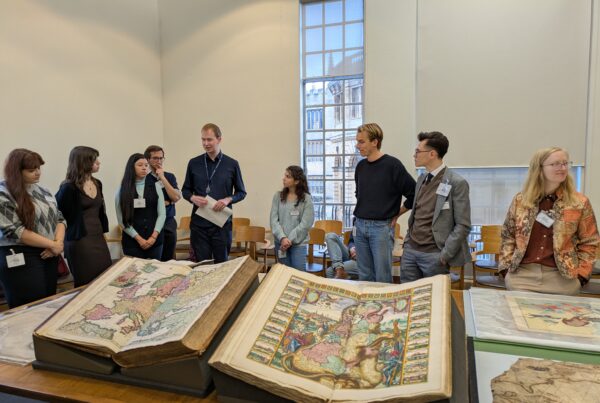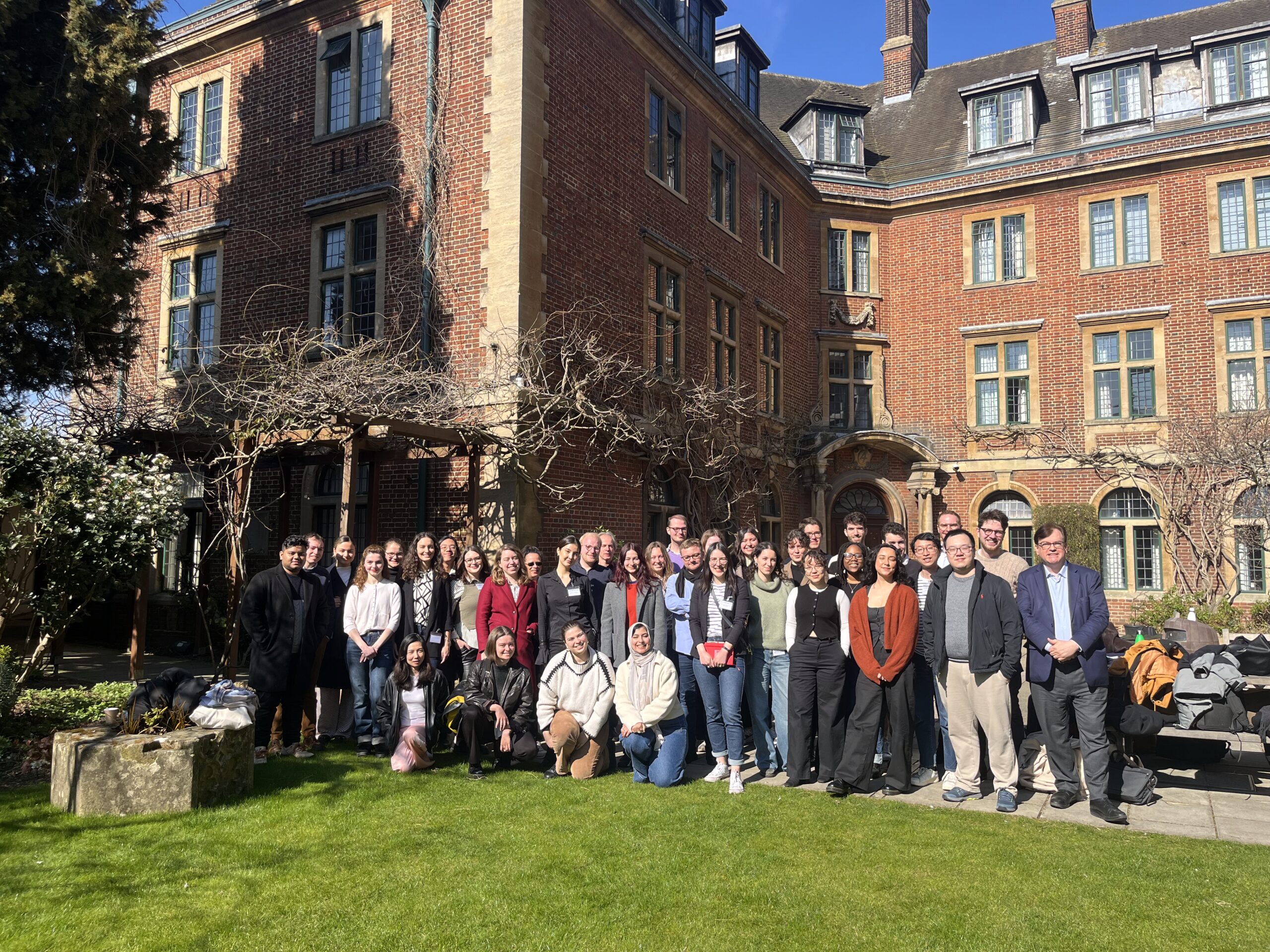
The Europaeum Spring School took place at the University of Oxford from 17–20 March in St Peter’s College with thirty-four students drawn from a dozen disciplines and from across eleven network universities. The theme was “Resistance and Resilience”, two intertwined concepts that are gaining increasing prominence in both academic discourse and public consciousness. In the context of social and political struggles, resilience is closely linked to resistance. It represents the endurance and adaptability that allow resistance movements to persist over time, despite setbacks or opposition.
This year, three students, who attended the event kept travel diaries of each day of the event. You can read the diary of CEU MA student, Yasmeen Elsayed further down this page and the diaries of Bologna student, Anna Pozzi and St Andrews’ student, Camila Contreras-Langlois on this separate webpage.
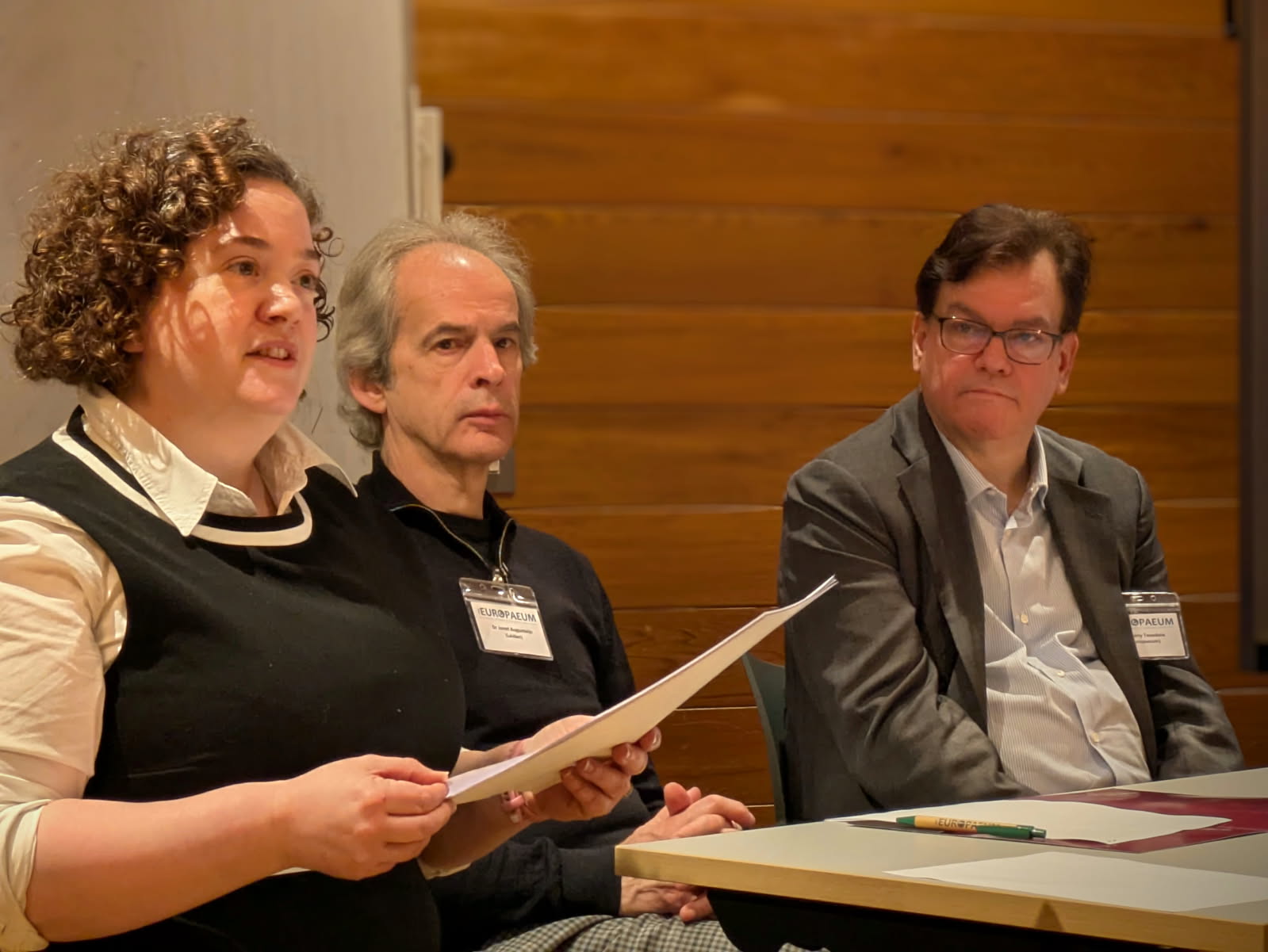
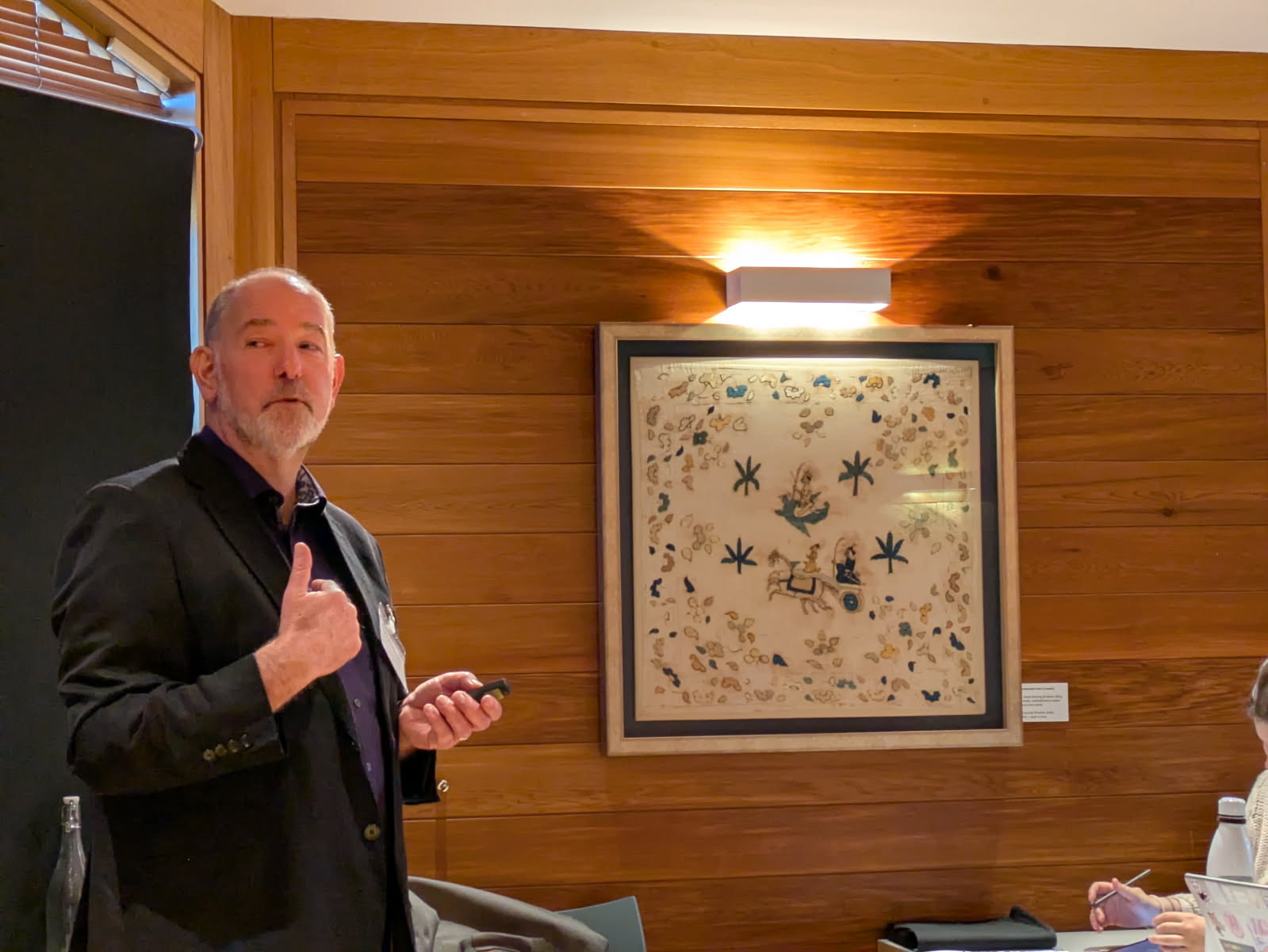
The event began with a keynote lecture from Dr Alexandra Lloyd, Fellow and Tutor in German at St Edmund Hall (Oxford), who discussed the cultural impact of the White Rose resistance circle against the Nazis. Joost Augusteijn (Leiden), Maxine David (Leiden), and Lena Reim (Oxford) then participated in a panel interrogating the relationship between resistance and resilience in historical and contemporary contexts. The Spring School then saw eighteen student presentations in panels on spaces of resistance, publics of resistance, gendering resistance and resilience, technologies of resistance and resilience, queering resistance and resilience, and resilience at the margins. Other Oxford academics who gave keynote lectures included Prof. David Hopkin (Hertford College), Marnie Howlett (St Antony’s College/Nuffield College), and Prof. Lyndsey Jenkins (Mansfield College). A second panel on narratives of resilience featured Dr Bart van der Steen (Leiden), Prof. Alexander Betts (Brasenose College, Oxford), and Dr Tania Abbiate (Bologna).
Students discussed the presentations they had heard in special sessions at the end of the day led by the Core Director and Drs Augusteijn and David. Students were encouraged to think about how the relationship between Resistance and Resilience is best defined and how analytical approaches to definition intersection with historical approaches towards description. The students considered how marginalised communities use humour or storytelling as forms of resistance, the relationship between individual resilience and collective resistance, the emotional and psychological costs associated with both concepts, and the patterns and themes recurred across different contexts.
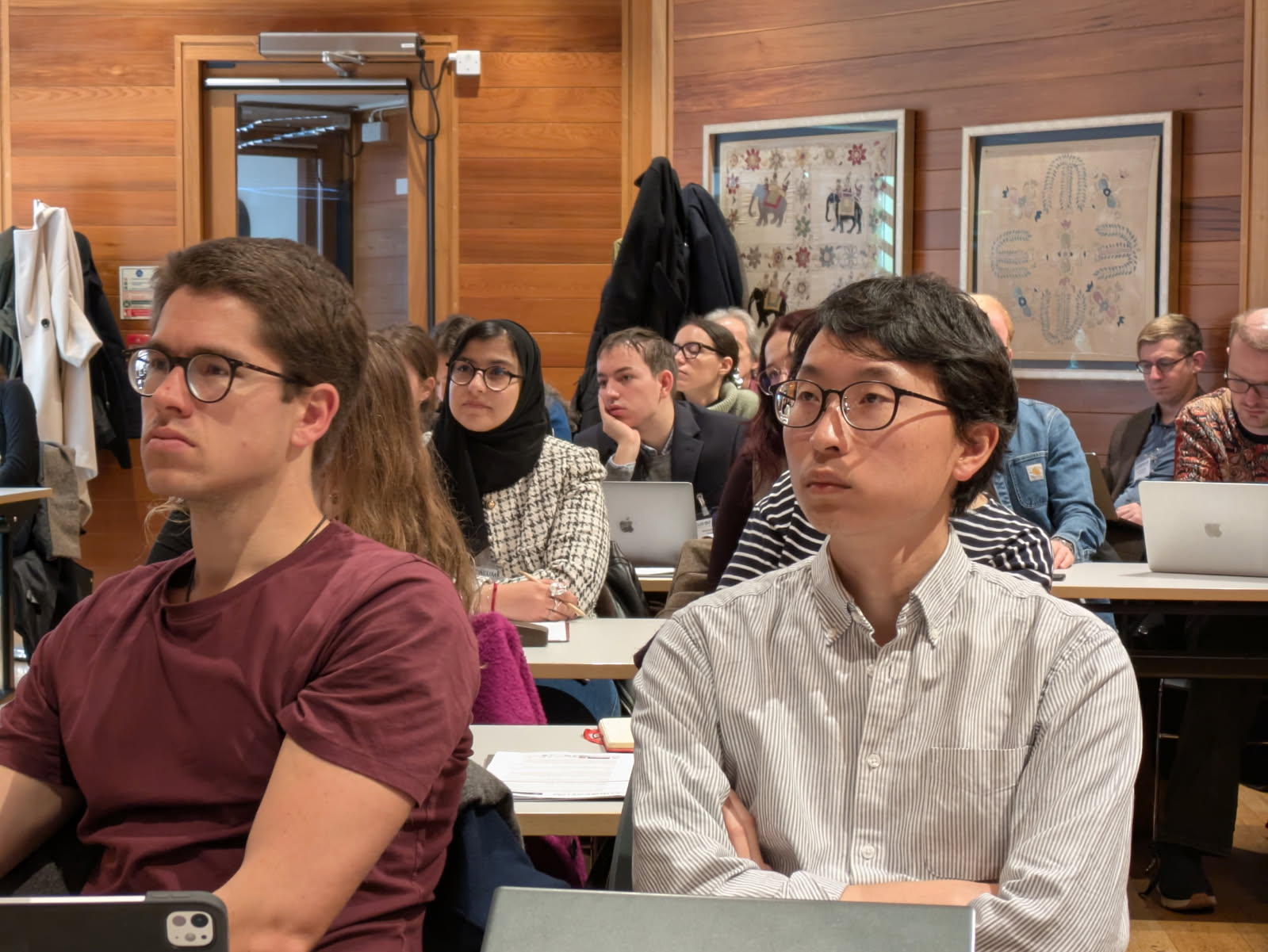
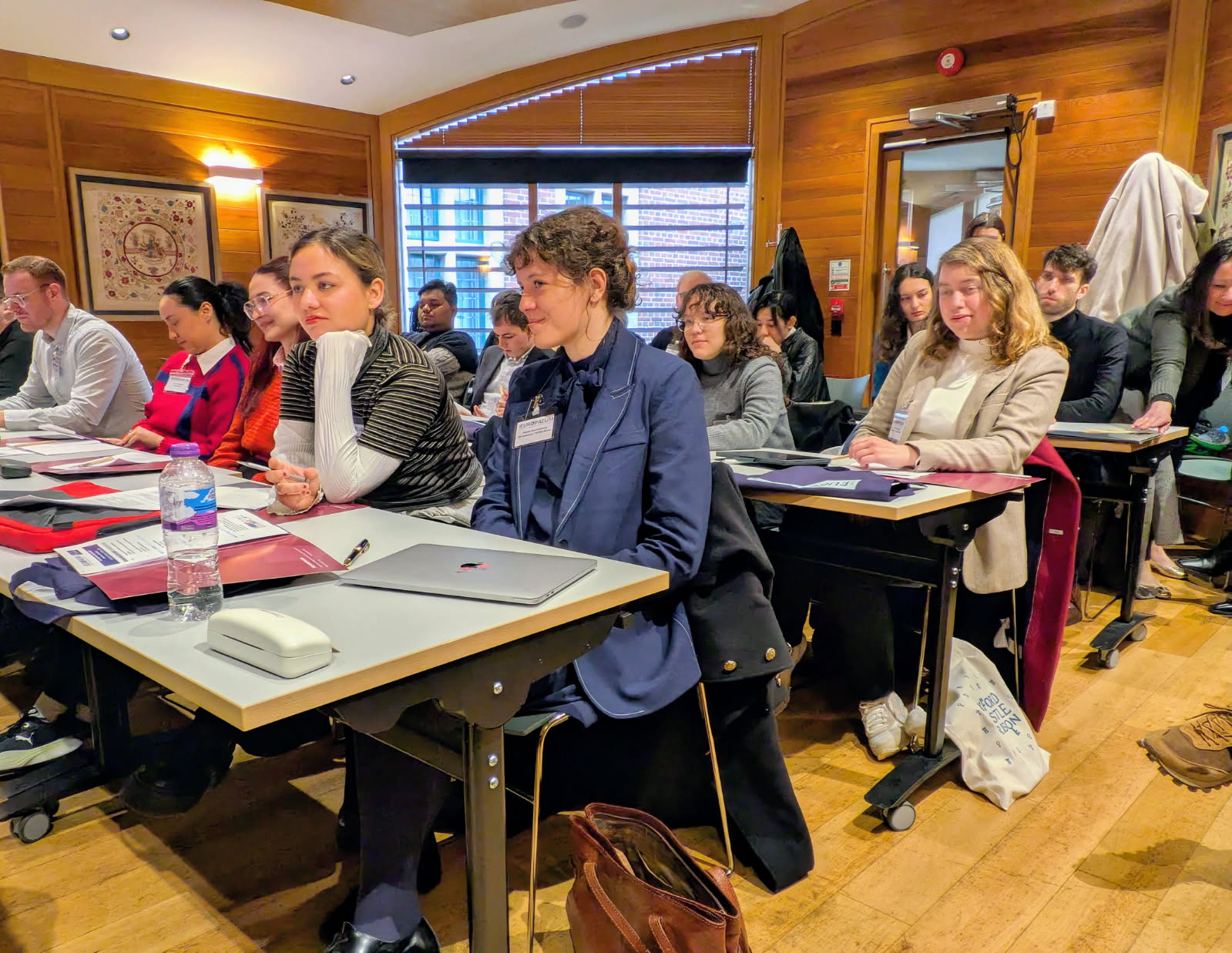
Finally, students reflected on the negative contexts in which resistance and resilience might occur: dictatorial regimes fighting for survival, denialism, etc. Students from each group presented oral reports of their discussions to the overall cohort in a closing session which also addressed broader questions. What makes resistance movements sustainable over time? How might concepts of resistance and resilience need to evolve in response to emerging global challenges?
The Europaeum is very grateful to all who contributed to the event and participated in it to make it a great success. These include the many individuals who gave up their time to appear speak as keynotes or on the roundtable panels. It also thanks St Peter’s College for hosting our students.
Student Travel Diary
Yasmeen Alaa El Din Abdel Atey Elsayed – Erasmus Mundus MA in Women’s and Gender Studies – Central European University (CEU)

My journey began from Vienna to London, filled with excitement and expectations, and from there I headed to the city of Oxford. The trip was more than a geographical transition; it was the beginning of a deep intellectual path exploring the meaning of resistance and resilience in our world today. For that reason, I chose to name each day to reflect the diversity and progression in our understanding of these concepts: On the first day, I could call it “From the First Spark: Resistance through Memory, Art, and Public Space.” We began with the historical roots of resistance and its manifestations in public spaces and artistic symbols.
The second day, “Gender and Technology: Hidden Currents of Daily Resistance,” delved into the invisible dimensions of resistance through the body, storytelling, humor, and technology.
Then came the third day, “The Margin Speaks: Queerness, Identity, and Microscopic Recognition,” which shed light on marginalized voices that form powerful resistance on both macro and micro levels. Finally, the last day, “Resisting Structures: When Economy, Law, and Technology Move,” raised questions about whether resistance is possible from within the systems themselves.
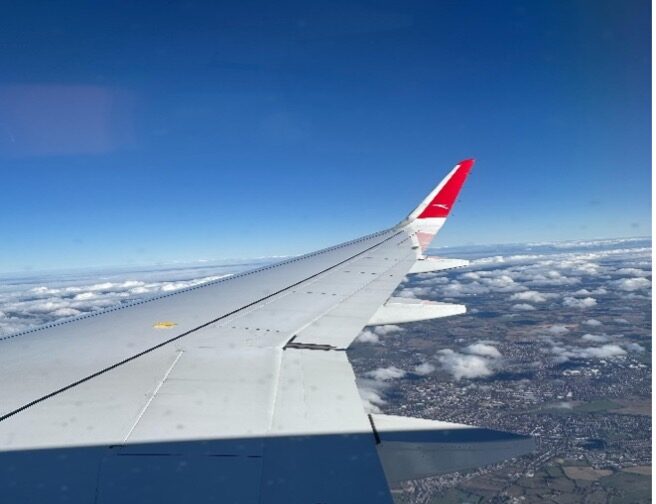
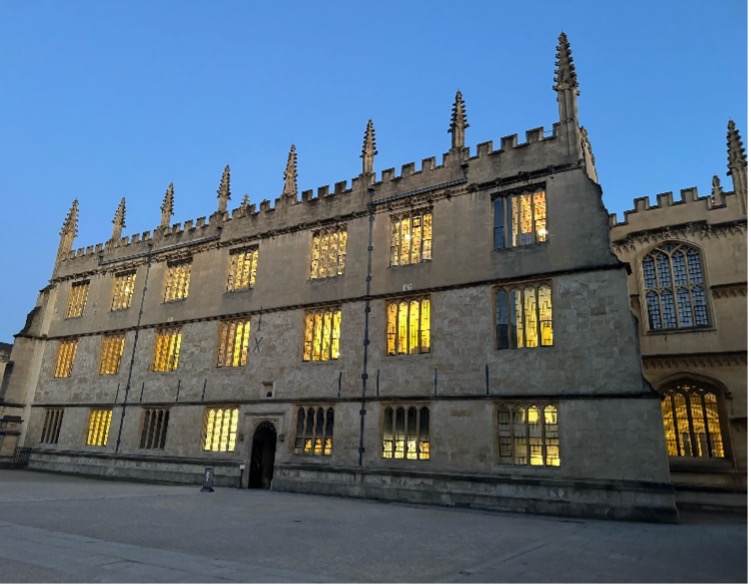
Day One – Monday, 17 March
The first day began with a warm welcome from Anthony Teasdale and Dr. Miles Pattenden. Dr. Joost Augusteijn then gave us instructions for the discussion groups, making all the details of the Spring School easier to navigate and setting the stage for interactive participation in the days ahead.
In the opening session, Dr. Alex Lloyd spoke about White Rose, a German student resistance movement against the Nazi regime. The story was not just history—it was a call to reflect on the concepts of “resistance” and “resilience” as actions, as politics, and as capacities for global change. It emphasized the importance of understanding resistance in its multiple forms—from culture, music, and religion, to social media—which have become intertwined tools of personal expression and collective action.
This multifaceted vision was powerfully illustrated in Panel 1, where interventions varied: how hunger strikes are not only forms of protest but existential expressions of resistance, the Zimbabwean experience linking ethics and political protest, and the importance of creating new narratives that connect stakeholders and build nations on the basis of justice and mutual recognition. We then moved to Panel 2, which explored “institutions and spaces” as sites of resistance—from museums serving communities, especially marginalized ones, to prisons and the body as spaces of resistance, and even the collective memory of revolutions like the French Revolution. We came to understand how places themselves can hold stories of resistance.
Panel 3 focused on the “public sphere,” where art and graffiti have become living archives of the margins and a means of creating new solidarities and alternative understandings of citizenship. The discussions also tackled the current liberal and democratic crises through statistical and empirical perspectives.
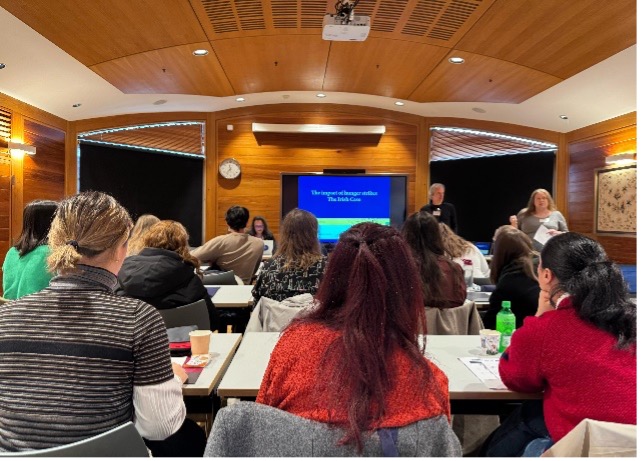
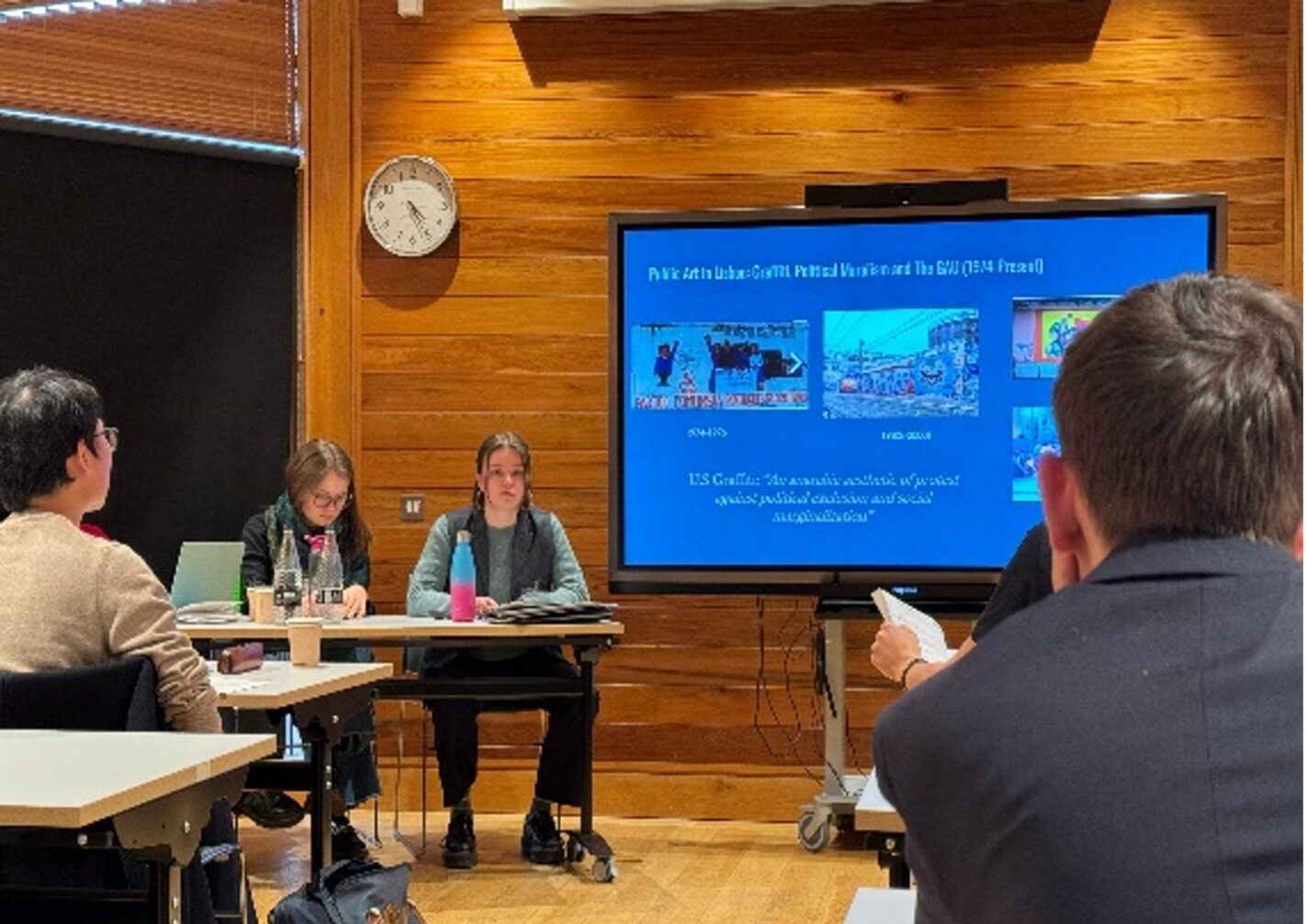
Day Two – Tuesday, 18 March
The day began with Professor David Hopkin, who took us on a journey through maritime stories and narratives, showing how storytelling itself becomes a tool of resistance and resilience. It was an inspiring introduction to understanding how people across time record their experiences—through writing, memory, or even autobiography.
We then moved to Panel 4, which addressed gender resistance, from Mexican feminism to the everyday tools of resistance used by Arab women against the patriarchal system—such as Arab feminist cinema and semi-public/private spaces like hammams and beauty salons—culminating in the symbolism of Susanna who reshapes the image of powerful women figures. This session provided an intersectional perspective on understanding gender as a critical political field for both resistance and resilience.
Building on that, Professor Lyndsey Jenkins presented a session where we revisited the history of British feminism, how it evolved through overlapping waves, and the figures who led the struggle for gender justice and resistance against gender-based discrimination.
Panel 5 then explored “Technologies of Resistance” in contemporary times, rethinking them as spaces for resistance and resilience. Topics included satire as a tool of resistance in China, mobilizing Gen Z in Bangladesh from the streets to the internet, and environmental justice through digital activism in Costa Rica. The session affirmed that technology is not just a tool for expression, but a medium for reshaping power and influence.
Day Three – Wednesday, 19 March
The focus of the day was on margins, identity, and recognition. The day started with Panel 6 on “Queer Resistance,” discussing how religion can intersect with queerness and how queer people reconstruct the past to build a different future. The session also addressed the importance of resistant sexual education and the role of media—such as series and films—as forms of resistance and resilience.
Panel 7 then highlighted “Resilience in the Margins”—such as dance as a visual tool of resistance in migration contexts, and philosophical readings of democratic backsliding. These were moments of reflection on how pain turns into knowledge, and knowledge into hope. We went deeper in Panel 8, which brought together academics and experts to discuss “Narratives of Resilience” in contexts of asylum and migration, and how new discourse is built from the bottom up, from margin to center, generating alternative visions of conventional concepts—sparking numerous discussions around these themes. The day concluded with a powerful lecture by Dr. Marnie Howlett on grassroots Ukrainian resistance under Russian occupation.
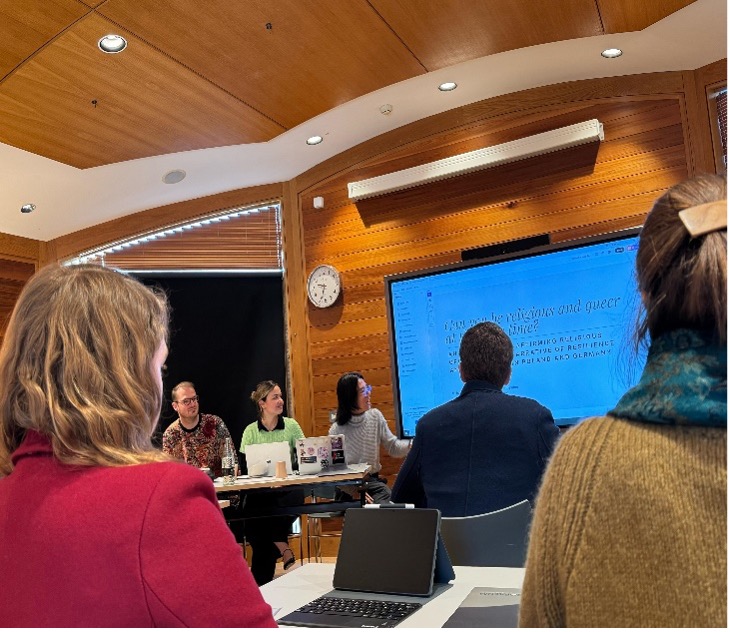
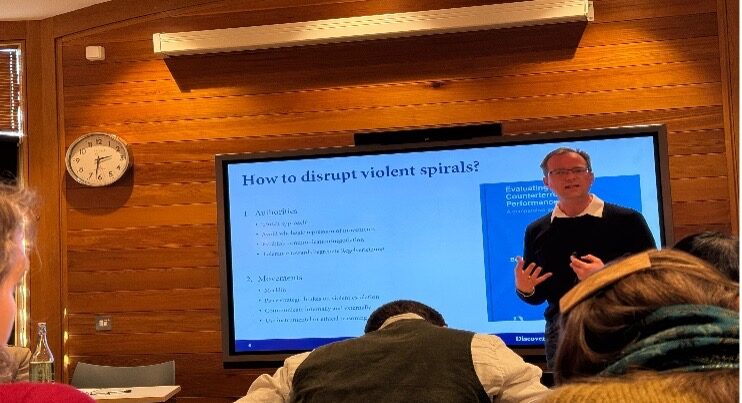
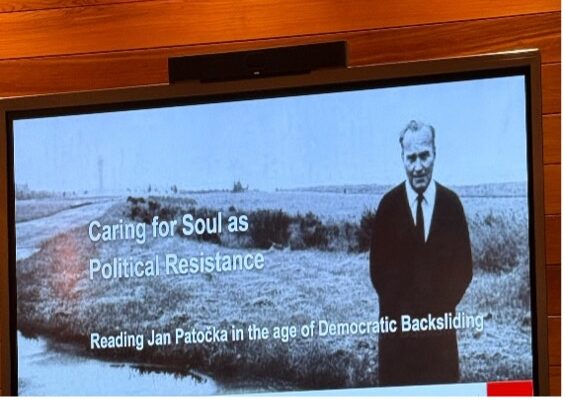
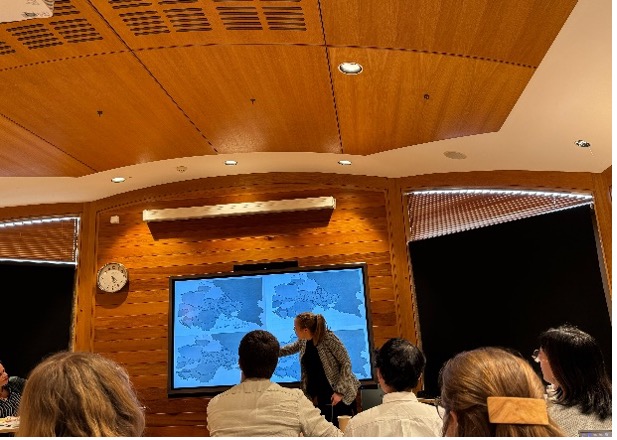
Day Four – Thursday, 20 March
On the final morning, Panel 9 tackled a crucial yet rarely discussed topic in the context of resistance: political economy. The panel shed light on the intersection of economic policies, sustainable finance, digital governance, and political activism. The panel opened with a presentation on how Europe interacts with the energy strategy of the Asian Infrastructure Investment Bank, sparking significant debate on the forms of resistance within the global economy—particularly concerning sustainable finance. This was followed by an intervention on the legal and administrative challenges in enforcing the Digital Services Act, especially concerning hate speech and illegal content, affirming that resistance can also be legal and institutional.
It concluded with a discussion on the relationship between political movements and digital activism, noting that technology is not just a tool, but a platform incubating large-scale resistant movements. This panel formed a bridge between the social and cultural dimensions of resistance discussed in previous days and the structural and institutional dimension, affirming that resistant action cannot be separated from the wider economic and political context.
Afterwards, we gathered for the final discussion sessions in our groups A, B, and C, where we exchanged reflections on our experiences throughout the Spring School. We discussed how our understanding of the concepts of resistance and resilience had evolved and delved into core questions such as: Who possesses the ability to resist? What are the conditions for producing resilience? What are the levels and tools of resistance? How can these models be documented, shared, and expanded locally and globally? Who resists? How? Why? To what extent? And how sustainable is it?
Conclusion:
The Spring School concluded with a high level of collective reflection on everything we experienced. Resistance was not only about actions—it was also about emotions, narratives, and spaces where knowledge and community are constructed.
What truly distinguished this school was the gathering of master’s and doctoral students from diverse academic, geographic, and cultural backgrounds. The panels and sessions were not merely academic presentations, but lively meetings of stories and experiences of resistance lived daily.
This multiplicity of perspectives enabled us to reconsider the concepts of “resistance” and “resilience” as complex processes formed through intersecting interactions between individuals, institutions, and communities. We learned that resistance is not only a heroic moment—but a daily, continuous act—sometimes silent, and at other times loud.



